Things to do in Sofia
The old and new collide in Sofia, where the modern world meets ancient cultures. Today, architecture lovers will see a delightful mixture of Thracian, Byzantine, Roman, and Slavic buildings, including the multi-domed Byzantine Alexandar Nesli Memorial Church, the medieval art of the Bryana Church (a UNESCO world heritage site), and the Russian Church of St Nicholas.
Sofia's attractions also include a wealth of museums and galleries, such as the National Historical Museum, the Earth and Men National Museum, the Bulgarian National Gallery of Arts, the Ethnographical Museum, and the Sofia City Art Gallery. Otherwise, visitors should venture to the Sofia Zoological Garden, Sofia City Garden (with its cafes, fountains and playgrounds), and the famous Turkish Mineral Baths.
The city's shopping highlights include Zhenski Pazar or 'women's market', which is open to both men and women, and offers fresh food, flowers and basic goods. The market doesn't carry many souvenirs but is worth visiting for its bustling atmosphere. Tsentralni Hali (Central Food Halls) is another busy market. Housed in a neo-Renaissance building, shoppers will find wine, fresh food, coffee, and other treats.
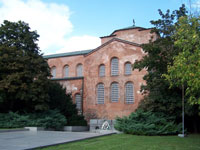
St. Sofia Church
The St Sofia Church, also called the Hagia Sophia Church, is the oldest Eastern Orthodox church in the city, dating from the 4th to 6th century, and is regarded as one of the most …
St. Sofia Church
The St Sofia Church, also called the Hagia Sophia Church, is the oldest Eastern Orthodox church in the city, dating from the 4th to 6th century, and is regarded as one of the most significant examples of early Christian architecture in the Balkans. In the 14th century the church gave its name to the city of Sofia, meaning 'holy wisdom'. The church was built on the site of several earlier churches and places of worship, dating back to the days when the site was part of the necropolis of the Roman town of Serdica. As a result, several tombs have been discovered under and around the church, which are incredibly interesting for history buffs.
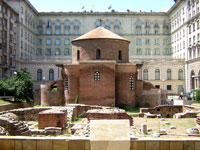
St George Rotunda
The rotunda church of St George is considered to be the oldest building in Sofia, dating back to the 4th century, and is situated amid the remains of the ancient Roman town of Serd…
St George Rotunda
The rotunda church of St George is considered to be the oldest building in Sofia, dating back to the 4th century, and is situated amid the remains of the ancient Roman town of Serdica. The St George Rotunda is famous for its exquisite architecture and layers of medieval frescoes that were discovered under a covering of plaster. The church functions as a museum and the magnificent dome is protected by UNESCO. It is located in a square enclosed by the Presidential Buildings and this makes the contrast between the ancient and the modern quite striking. There is a fair amount of information on the history and significance of the site available at the entrance, which is worth reading.
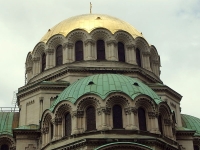
Alexander Nevsky Cathedral
One of the finest examples of 20th-century architecture in Sofia, and one of the most iconic buildings in the city, the magnificent Alexander Nevsky Cathedral was built between 188…
Alexander Nevsky Cathedral
One of the finest examples of 20th-century architecture in Sofia, and one of the most iconic buildings in the city, the magnificent Alexander Nevsky Cathedral was built between 1882 and 1912 to honour the Russian soldiers who died fighting to liberate Bulgaria from Turkish rule in the war of 1878 under Tsar Alexander II. It is one of the biggest cathedrals on the Balkan Peninsula. The famous religious monument is situated in the centre of Sofia, on the tree-lined square of the same name, which also contains the Monument of the Unknown Soldier. The cathedral is an active place of worship, so services and events may disrupt sightseeing, but entry to the main building is free.
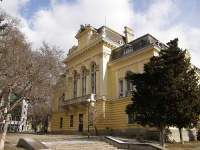
National Ethnographic Museum
The National Ethnographic Museum in downtown Sofia has one of the richest collections of cultural artefacts on the Balkan Peninsula, representing the traditions, arts, crafts and l…
National Ethnographic Museum
The National Ethnographic Museum in downtown Sofia has one of the richest collections of cultural artefacts on the Balkan Peninsula, representing the traditions, arts, crafts and lifestyle of the Bulgarian people from the 17th to the 20th century. The museum contains a wealth of exhibits from around the country, amounting to over 50,000 items including national costumes, jewellery, art works and musical instruments. If visitors are lucky, and the place is not crowded, one of the staff members may give them a personal tour. This is the best possible place to find out about local folklore and to gain an understanding of the traditional clothes, customs and beliefs.
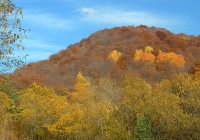
Vitosha Mountain
Rising above the capital city of Sofia, Vitosha Mountain is one of the symbols of the capital and is the most visited mountain in Bulgaria. Starting where the suburbs end, the whol…
Vitosha Mountain
Rising above the capital city of Sofia, Vitosha Mountain is one of the symbols of the capital and is the most visited mountain in Bulgaria. Starting where the suburbs end, the whole mountain has been designated a national park (the oldest in the Balkans), and is home to deer, bear, wild boar, fox and a variety of rare birds. Vitosha is known for its 'stone rivers', or moraines, piles of huge rounded granite boulders carried and deposited by glaciers thousands of years ago, as well as for its restorative mineral springs. Vitosha is popular during all seasons and the well-known resort of Aleko is the most established winter ski resort in the area.
Boyana Church
Located on the outskirts of Sofia, the Boyana Church complex is a UNESCO World Heritage Site, and one of Bulgaria's most important tourist attractions. The first of the three build…
Boyana Church
Located on the outskirts of Sofia, the Boyana Church complex is a UNESCO World Heritage Site, and one of Bulgaria's most important tourist attractions. The first of the three buildings that make up the Boyana Church complex was built in the 10th century, but it is the second building (constructed in the 13th century) that is the obvious tourist draw card. Containing frescoes painted in 1259, the second Boyana Church building is nothing less than the site of the most important collection of medieval eastern European art in the world. The paintings, which conform to a Byzantine aesthetic, are almost perfectly preserved and offer visitors a rare insight into the long, proud history of Bulgarian art and culture.
Website www.boyanachurch.org



